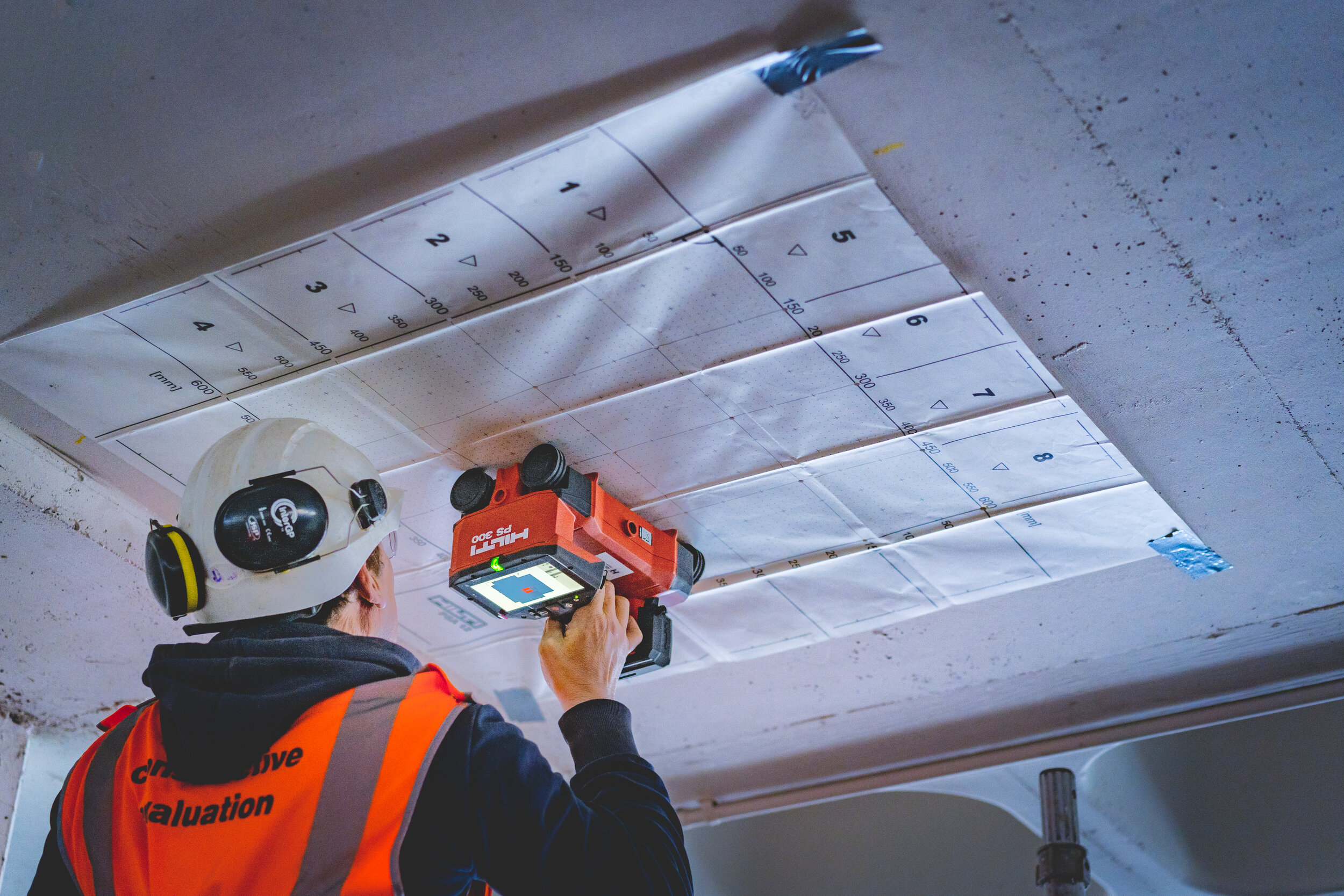Exploring the Secret Advantages of Concrete Scanning in Construction Projects
In the world of contemporary building and construction techniques, the utilization of concrete scanning modern technology has actually emerged as a critical device for ensuring task efficiency and architectural integrity. From improving security measures to precisely discovering energies hidden below the surface, the advantages of concrete scanning are diverse. The ability to simplify task timelines and reduce costs while preserving existing structures is a testament to the worth this innovation offers the construction industry. As we delve into the nuanced advantages of concrete scanning, it comes to be noticeable that its effect expands much past surface-level assessments, offering a peek right into the detailed web of benefits waiting to be uncovered.
Improved Security Measures
Making use of sophisticated concrete scanning technology improves safety and security measures on building and construction websites by supplying exact detection of possible hazards concealed beneath the surface. This modern technology enables building teams to determine rebar, avenues, post-tension cables, and various other blockages prior to excavation or drilling, significantly lowering the risk of accidents. By determining these elements precisely, workers can stay clear of destructive important structural components, hence stopping injuries, delays, and pricey repairs.
In addition, concrete scanning plays an essential role in making certain the stability of existing structures during growths or restorations. By finding weaknesses, voids, or deterioration within concrete components, designers can deal with these problems proactively, enhancing the general safety and security and durability of the structure. This positive method not just alleviates the threat of structural failures yet also reduces the possibility for crashes triggered by unpredicted structural shortages.
Fundamentally, the implementation of concrete scanning innovation serves as an aggressive precaution that safeguards both construction workers and the architectural stability of buildings, ultimately contributing to the overall success and performance of building tasks. - RainierGPR Concrete Scanning
Accurate Detection of Utilities
Concrete scanning technology promotes exact recognition of below ground energies, boosting building site safety and security and effectiveness. Accurate discovery of energies is important in building tasks to avoid pricey problems, task hold-ups, and most significantly, ensure the safety of workers and the general public. By making use of sophisticated scanning modern technologies such as ground-penetrating radar (GPR) and electromagnetic induction, construction groups can draw up the area of buried pipelines, cords, and various other utilities with high degrees of precision.

Time and Price Efficiency

Concrete scanning modern technology makes it possible for building teams to accurately locate rebar, post-tension wires, and various other ingrained objects within concrete structures. This precise details aids in preventing pricey blunders such as unexpected damages to essential components during drilling, reducing, or coring activities. Furthermore, by determining site link prospective risks ahead of time, the need for expensive fixings or revamp because of damages can be decreased, leading to cost financial savings for the task.

Additionally, the capacity to quickly and accurately detect utilities under the surface without creating any kind of damages not only conserves time but likewise stops costly disturbances to existing framework. On the whole, the moment and price effectiveness advantages of concrete scanning make it an invaluable tool for improving building and construction task monitoring and execution.
Conservation of Architectural Honesty
Protecting the architectural honesty of structures and facilities is critical in making certain lasting security and security. Concrete scanning plays an essential role in this preservation procedure by permitting building and construction experts to identify see this site prospective risks to the structural integrity of a building or facilities before they escalate into significant concerns. With making use of advanced scanning modern technologies such as ground-penetrating radar (GPR) and electromagnetic induction, construction groups can non-invasively assess the condition of concrete frameworks, situate rebar, post-tension cable televisions, and other embedded aspects, and identify any kind of spaces, splits, or damage within the concrete.
Improved Project Planning
In order to ensure the successful implementation of building and construction tasks, thorough focus to information and extensive planning are necessary parts that stem from a detailed understanding of the structural conditions identified via concrete scanning. Inevitably, incorporating concrete scanning into the project planning stage boosts coordination among group participants, promotes proactive problem-solving, and contributes to the effective distribution of building tasks within spending plan and timetable restrictions.
Final Thought
In verdict, concrete scanning uses many advantages in construction jobs. By improving safety steps, accurately discovering utilities, enhancing time and cost effectiveness, maintaining architectural stability, and aiding in task preparation, concrete scanning shows to be a vital tool for successful task execution. Its capability to alleviate threats, increase effectiveness, and make certain job honesty makes it an indispensable possession for building and construction experts.
In the realm of modern-day construction practices, the use of concrete scanning technology has actually arised as a pivotal tool for making certain project efficiency and architectural integrity.Concrete scanning innovation enables building and construction teams to properly locate rebar, post-tension cords, and other ingrained objects within concrete structures. Via the use of read this sophisticated scanning technologies such as ground-penetrating radar (GPR) and electromagnetic induction, building and construction groups can non-invasively analyze the condition of concrete frameworks, situate rebar, post-tension wires, and various other ingrained elements, and determine any kind of gaps, splits, or wear and tear within the concrete.
In order to make sure the successful execution of building and construction tasks, precise focus to detail and complete preparation are important parts that stem from a thorough understanding of the structural conditions determined with concrete scanning. Ultimately, integrating concrete scanning into the job preparation phase enhances coordination among group participants, promotes aggressive analytic, and adds to the successful delivery of building and construction jobs within spending plan and schedule constraints.